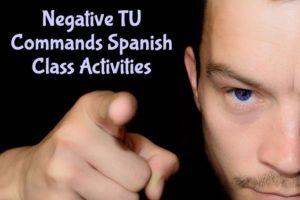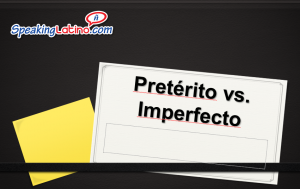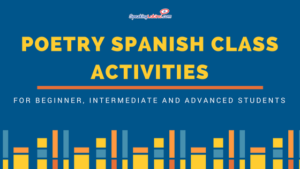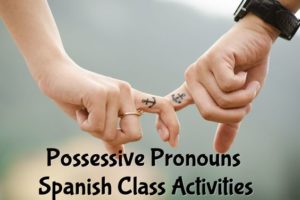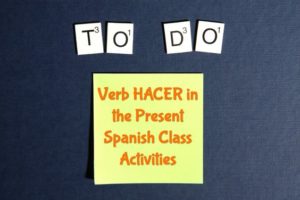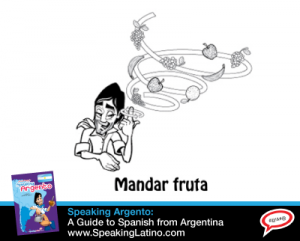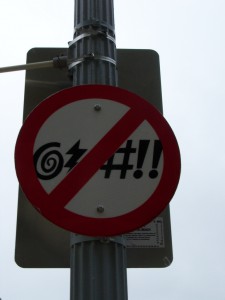Formal commands, also known as usted commands, are a way of giving polite commands or requests in Spanish. These commands are used when addressing someone in a formal setting or when showing respect to someone who is older or in a position of authority. In order to understand and use formal commands, a student should […]
Uses of POR Spanish Lesson Plan and Resource Sheet
The word “por” in Spanish can have many different uses depending on the context. Here are some of the most common uses: Expressing cause or reason: “Lo hizo por amor” (He did it out of love). Expressing duration of time: “Estuve esperando por tres horas” (I was waiting for three hours). Expressing a means of […]
Spanish Language Day Class Activities for Beginner, Intermediate and Advanced Students
Don’t tilt at windmills, seize the day! Introduce your students to Cervantes and his most famous, most beloved creation, Don Quixote, on Spanish Language Day this April. The Significance of Spanish Language Day Spanish Language Day, also known as Día Mundial del Idioma Español, is a celebration of multilingualism held every year on April 23rd, […]
Past Subjunctive (Imperfect Subjunctive) Spanish Class Activities
The past subjunctive is used to express hypothetical or non-real actions or events in the past. Some examples of the past subjunctive in Spanish would be: “Si hubiera sabido que ibas a venir, te habría esperado en el aeropuerto” (If I had known you were coming, I would have waited for you at the airport) […]
7 Things I Would Like to Have Known as a New Spanish Teacher
by Lynn Ramsson Before I started my teaching career, I had heard that Spanish teachers are a truly unique bunch. I wasn’t sure what that meant, but after a year or two in the Spanish classroom, I understood much better what I had heard. I felt proud, both of my own progress as a teacher and […]
Conditional Verbs Spanish Lesson Plans and Class Activities
Conditional verbs are forms of verbs used to express a variety of hypothetical conditions. Before learning conditional verbs, students should have a basic understanding of verb tenses and the ability to make conjugations with regular and irregular verbs. They should also be familiar with the structure of affirmative and negative sentences, as well as understand […]
Negative TU Commands Spanish Lesson Plan and Song Activities
Negative Tu Commands are direct commands used when addressing someone familiar to you, such as a close friend, family member or peer. They are typically preceded by the word “no” and followed by the verb. Examples of informal negative tu commands include “No hables” (Don’t speak), “No me mientas” (Don’t lie to me), “No discutas […]
Preterite vs Imperfect Spanish Class Activities
1. Lesson Plan – Preterite vs Imperfect, Describing a Situation – Holidays (Vacation) and Family Celebrations [MEMBERS ONLY] – Students learn to use the indefinite and the imperfect tenses to speak about actions in the past. They also learn vocabulary related to vacations and familiar celebrations. 2. Lesson Plan – Preterite vs Imperfect – Talking About […]
Present and Past Subjunctive with Doubt Spanish Lesson Plans and Resource Sheet
The Spanish present and past subjunctive are used to express doubt, uncertainty, hypothetical situations, and feelings. In the present tense, the subjunctive is used when expressing doubt or uncertainty about the outcome of an action, as well as when making a suggestion or a recommendation. For example, “Espero que venga pronto” (I hope he/she comes […]
Preterite Stem-Changing -IR Verbs Spanish Lesson Plan and Resource Sheet
In Spanish, stem-changing verbs are those that undergo a vowel change in their stem when conjugated. When these verbs are in the preterite tense, they maintain the same stem change in the past. For verbs ending in -IR, the stem-changing occurs in the third person singular and plural forms (él/ella/usted, ellos/ellas/ustedes). The stem vowel changes […]
How to Include Poetry in Your Spanish Lesson Plans
Expand your students’ cultural knowledge by introducing them to Spanish-speaking poets and their poetry (National Poetry Month in April is a great time to begin). You’ll find a few activities at the end of this article to capture your students’ imaginations and who knows… your students just might find poetry more interesting than they expected! It’s a […]
Future Perfect Spanish Lesson Plan and Resource Sheet
The Future Perfect tense in Spanish, also known as “Futuro Perfecto,” is used to express actions that will have been completed by a certain point in the future. This tense is formed by using the future tense of the auxiliary verb “haber” followed by the past participle of the main verb. For example, “habré hablado” […]
Preterite of IR and SER Spanish Lesson Plan and Printable Poster
The preterite tense in Spanish is used to express past actions that are completed or finished. The verbs “IR” and “SER” have the same conjugation in the preterite, which can sometimes cause confusion. In the preterite, “IR” and “SER” are both conjugated as follows: fui, fuiste, fue, fuimos, fuisteis, fueron. This means that the context […]
Possessive Pronouns Spanish Lesson Plan and Resource Sheet
Possessive pronouns in Spanish are words that indicate possession or ownership of something. These pronouns agree in gender and number with the noun they refer to, and they replace the noun in the sentence. Some examples of possessive pronouns in Spanish are “mi” (my), “tu” (your), “su” (his/her/its/your – formal), “nuestro/nuestra” (our), and “suyo/suya” (theirs/yours […]
Personal A Spanish Lesson Plan and Resource Sheet
In Spanish, the Personal A is a preposition that is used before a direct object that refers to a person or an animal with a certain level of personal significance. It is not translatable into English and is a unique feature of the Spanish language. The Personal A is used to indicate that the direct […]
Verb DOLER Spanish Lesson Plan for Beginner Students
The Spanish verb “doler” is used to express physical pain or discomfort. In order to use “doler,” you need to know two things: the subject experiencing the pain, and the body part that is causing the pain. The verb is constructed as follows: “doler” + [body part] + “a” + [subject]. For example, “Me duele […]
Health & Body Parts Vocabulary Spanish Lesson Plans and Class Activities
When teaching Spanish as a second language, the introduction of body parts vocabulary typically occurs in the early stages of learning, usually in beginner or elementary-level classes. This is because the vocabulary related to body parts is relatively simple and frequently used, making it an essential part of basic Spanish language acquisition. Generally, students are […]
Present Stem-Changing Verbs Spanish Class Activities (Boot Verbs)
Lesson Plan – Present Stem-Changing Verbs – At the end of this activity, students will be clear on the use of irregular stem-changing verbs in the present tense. Students will know how to identify them and use them accurately. First, students revise the irregular stem-changing verbs in the present with a the song Pero me […]
Verb HACER in the Present Spanish Class Activities
Lesson Plan – Verb HACER in The Present: School Exams – Objectives At the end of this activity, students will have reviewed the verb ‘hacer’ present tense conjugation and will have used it to talk about school exams Students will be able to say what happens during a test in Spanish. Students can write a […]
Foreign Language Week: 5 Activity Ideas from Monday to Friday
Want to bring the world and all of its languages closer to your classroom? Inspire your students to excite your school community and get everyone involved in National Foreign Language Week this March. What is National Foreign Language Week? Every March, schools around America celebrate National Foreign Language Week or World Language Week to discuss […]
Numbers 100 – 1000 Spanish Class Activities
Lesson Plan – Numbers 100-1000 Objectives At the end of this activity, students will have reviewed and used, both in written and oral form, the Spanish numbers up to 1000. Students can say numbers and explain how to remember numbers 100 – 1000 in Spanish. Students can explain their infographic about Social Media in […]
Present Perfect vs Past Perfect Spanish Class Activities
Both the present perfect and past perfect tenses are formed using the auxiliary verb “haber” (to have) and a past participle. Students may find it difficult to distinguish between the two tenses since they both involve the same auxiliary verb. In addition, the past participle often looks the same for regular and irregular verbs in […]
Possessive and Demonstrative Adjectives Spanish Class Activities
1. Lesson Plan – Possessive and Demonstrative Adjectives, Position of Adjectives [MEMBERS] – Students learn possessive adjectives by watching a video and by doing an oral practice that includes vocabulary related to the family. They do a written and oral practice of the forms for the demonstrative adjectives in singular and plural. Finally, they watch the […]
7 Read Across America Day Spanish Class Activities (a.k.a. Dr. Seuss Day)
Remember those READ posters of movie stars and other celebrities? Though the appeal of posters is their retro look, the message is still very relevant today. So engage your students and talk about literacy with some fun activities on March 2nd for National Read Across America Day! What is National Read Across America Day? National […]
Preposition “A” Spanish Lesson Plan for Beginner Students
The preposition “a” is used to indicate direction or movement towards a person or a specific location. It is also used to mark the direct object of a sentence when it refers to a person, as in: “Voy a ver a mi amigo” (I am going to see my friend). It is also commonly used […]
School Subjects and After-School Themed Spanish Lesson Plans
As a Spanish teacher, it’s essential to equip your students with vocabulary they can use outside the classroom, especially when it comes to after-school activities and school-related topics. Here you will find suggested Spanish lesson plans and resources, with engaging activities and materials to help your students learn and practice vocabulary related to sports, hobbies, […]
Clothing, Color and Pricing Spanish Class Activities
Lesson Plan – Adjective Agreement and Verbs LLEVAR, VESTIR, PONER – Clothing, Colors, Pricing – First, students learn the names of colors and clothing items through two videos. Later, they watch the third video in three parts where they practice and expand their vocabulary about clothing; complete a table about the adjective agreement with nouns, […]
CABALLO vs CABALLERO: An Embarrassing Spanish Speaking Lesson
In Spanish, a lot of words may be altered slightly with diminutives or colloquialisms and still mean more or less the same thing, for example with “galleta” (cookie/cracker) and “galletita” (little cookie/cracker”). Chileans, in particular, are famous for their -itos. It is then understandable that one might confuse the words “caballo” and “caballero” and assume […]
The Argentina Spanish Street Slang Phrase MANDAR FRUTA
Sometimes, even native Spanish speakers can get tripped up by words and phrases used in other countries. A good friend of mine, Jorge is from Colombia but moved to Argentina to go to school. His Spanish and English are both impeccable, so I take great joy in any of his minor slip ups. It just […]
The Harshest Argentina Spanish Street Slang Insult: AALRPMQTRP
AALRPMQTRP Try saying that three times fast. I bet you didn’t learn the pronunciation rules for that many consonants in a row! Okay, okay, I’ll come clean. This is not a Spanish word, it is actually an acronym for the worst Argentine insult you can dish out: Andáte a la re puta madre que te re […]






